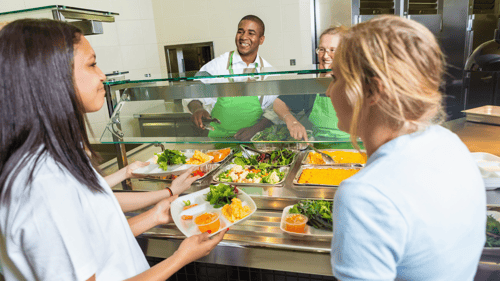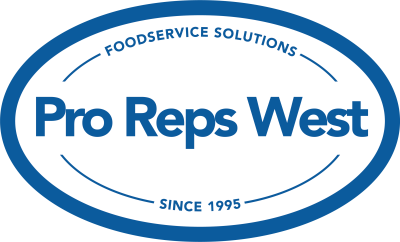Reduce School Food Waste with NEWAGE Solutions
There are various state and national initiatives in place to decrease the amount of food thrown out in K-12 schools across America. On average, 500,000 tons of unused food is wasted in school kitchens across the United States every year. That’s why each district has a strong community of school foodservice peers, chefs, and consultants ready to help each other reach shared food preservation goals.
Successful school districts understand the challenges of food waste and implement changes to make sure ingredients are used to the fullest potential. Taking steps to eliminate waste prevents needless spending and helps get fresh food into the bellies of more hungry children.
With 85 years of combined experience, Pro Reps West and NEWAGE Industrial each work to help K-12 nutrition directors, chefs, and consultants safely store and manage the inventory of school kitchens. Over the decades, many things have changed in school foodservice, but the need to minimize waste remains constant.
Below are a few key ways that school cafeterias can decrease the amount of food thrown into trash bins.
Portion Control and Meal Planning
 One of the most common ways for nutrition directors to reduce food waste is to implement a well-thought-out meal plan. Before finalizing new meal plans, it’s also important to educate and train school kitchen managers and staff in the same practices.
One of the most common ways for nutrition directors to reduce food waste is to implement a well-thought-out meal plan. Before finalizing new meal plans, it’s also important to educate and train school kitchen managers and staff in the same practices.
Things to consider when seeking a more sustainable meal plan include the number of students purchasing breakfast or lunch, favorite types of food, and the amount usually consumed.
Reduce food waste and cut costs by working to identify the exact amount of food your school needs to buy and estimate the number of leftover, unused food that usually occurs. With NEWAGE Share Carts, K-12 students are encouraged to leave unwanted, unopened food and drinks in a Share Cart to give to other hungry students who can help themselves.
Foods that are ideal for NEWAGE Share carts include individually packaged foods, snacks, milk, juice, and fruit. Share Carts are manufactured in America and available in a variety of colors. Additional features include:
- Two locations for custom signage
- Cold food pans that safely hold food temps six to eight hours when frozen
- Eliminate the need for ice!
- A top shelf that holds two Coldmaster CoolCheck™ drop-ins
- Pans included!
- Slanted second shelf for easy access and storage
- Reinforced base for miscellaneous packing needs
- Optional hinged, drop-down shelves for cold pans, computers, tablets, or supplies
Not to mention the heavy-duty casters, lightweight design, and convenient push handle that makes the cart easy to maneuver for any school cafeteria team member.
Another way to cut food waste is through disciplined portion control. By maintaining a keen eye on portions, school chefs ensure that students get the right amount of calories and nutrients from each meal.
As long as your team had a planning phase and calculated the number of meals needed per service, every student will get exactly what they need, and extra food won’t be wasted.
Food Donations and Composting
 One of the best ways to reduce food waste and the effect your school district has on the environment is to donate unused ingredients. Give away uneaten food that’s still in good condition to food banks, soup kitchens, or other organizations that help people in need.
One of the best ways to reduce food waste and the effect your school district has on the environment is to donate unused ingredients. Give away uneaten food that’s still in good condition to food banks, soup kitchens, or other organizations that help people in need.
Schools that donate leftover food reduce food waste and keep their budgets in check by avoiding food disposal costs. In addition, gifting meals to those in need helps districts to establish deeply-rooted relationships with local community organizations and further their commitment to social responsibility.
Turning food scraps into compost can create more room in the school budget and engage your student base. Implementing composting as part of a farm school program is an innovative educational approach that combines traditional classroom learning with hands-on composting and farming experience. Students in a farm school program spend part of an academic year working on a farm to gain practical skills in agriculture, food production, and sustainability.
Additionally, farm school programs often feature experiential learning activities that build teamwork, problem-solving skills, and other important life skills. By composting food, schools can reduce the amount of food that goes to landfills and cut down on dumpster fees and garbage transportation.
Schools that are proactive about meal planning and making the best use of every last unused crumb will create more food for their local community and more revenue for the district. Have an idea? Put it into action with the simple steps outlined below.

.png?width=3013&height=1826&name=PRW%20Badge%20White%20BG%20(1).png)




